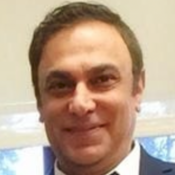Microwave seminar | 27 September 2021
Online

Lawson et al. (Physical Review Letters 123 (2019) 141802) have proposed a new variant of the microwave cavity dark matter axion experiment (P. Sikivie, Physical Review Letters 51 (1983) 1415), by which a wire array metamaterial serves as the resonator. The plasma frequency is determined by the wire radius and spacing, and can be designed to cover an important part of the mass (frequency) range of the current best estimates of the post-inflation axion. Furthermore, and most importantly, the plasma frequency is a property of the bulk material rather than the boundary conditions, as is the case for a microwave cavity, and thus the plasmonic haloscope may solve a long-standing conundrum, namely how to reach very high frequencies without the sacrifice of conversion volume. In this seminar, I will describe the research of our group in exploring the properties of wire array metamaterials and helping establish the feasibility of the tunable plasmonic haloscope for a real axion search.
Main paper/arXiv, related to the seminar, and other references
arXiv:1904.11872v1 [hep-ph] 26 Apr 2019
Tunable axion plasma haloscopes
Matthew Lawson,1, 2 Alexander J. Millar,1, 2 Matteo Pancaldi,1 Edoardo Vitagliano,3 and Frank Wilczek1, 2, 4, 5, 6, 7
1Department of Physics, Stockholm University, AlbaNova, 10691 Stockholm, Sweden
2Nordita, KTH Royal Institute of Technology and Stockholm University, Roslagstullsbacken 23, 10691 Stockholm, Sweden
3Max-Planck-Institut fur Physik (Werner-Heisenberg-Institut), Fohringer Ring 6,
